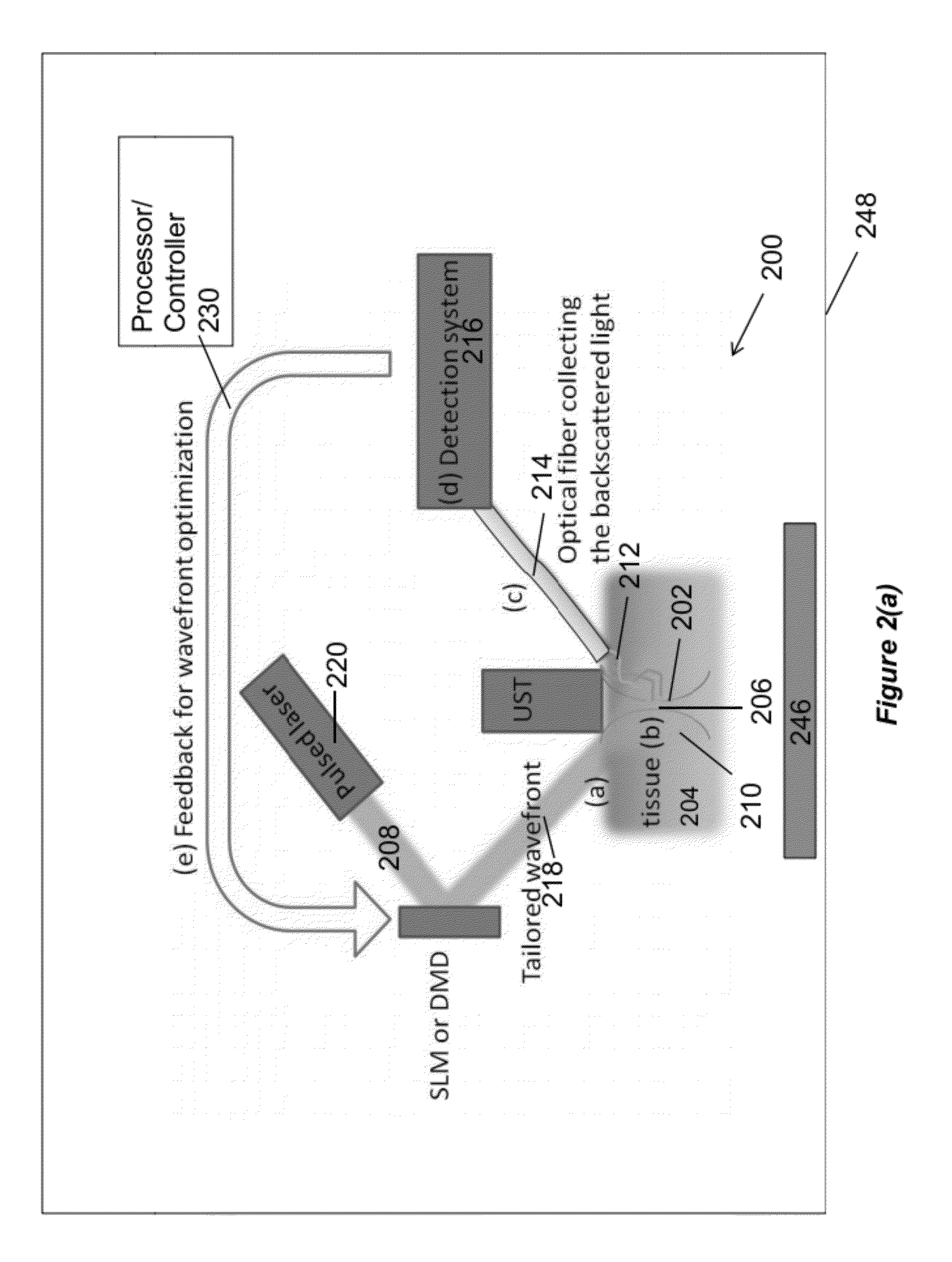Acoustic-assisted iterative wave form optimization for deep tissue focusing
a technology of deep tissue and iterative wave form, applied in the field of deep tissue iterative wave form optimization, can solve the problems of tissue damage, impracticality and unsafe, and scattering of light in the tissue, and achieve the effects of improving the efficiency of deep tissue focusing
- Summary
- Abstract
- Description
- Claims
- Application Information
AI Technical Summary
Benefits of technology
Problems solved by technology
Method used
Image
Examples
Embodiment Construction
[0044]In the following description, reference is made to the accompanying drawings which form a part hereof, and which is shown, by way of illustration, several embodiments of the present invention. It is understood that other embodiments may be utilized and structural changes may be made without departing from the scope of the present invention.
[0045]Overview
[0046]In the proposed method of one or more embodiments of the present invention, a high frequency ultrasound transducer is used to define an ultrasound focus within a tissue. Light that passes through the ultrasound focus is frequency-shifted. Several methods, including digital holography [2] and confocal fabry perot interferometer [3], can be used to detect the frequency-shifted light. By detecting the amount of frequency-shifted light as a feedback, the input wavefront is iteratively tailored using a SLM or a deformable mirror device, such that the resulting wavefront comes to a tight focus at the ultrasound focus. In other ...
PUM
 Login to View More
Login to View More Abstract
Description
Claims
Application Information
 Login to View More
Login to View More - R&D
- Intellectual Property
- Life Sciences
- Materials
- Tech Scout
- Unparalleled Data Quality
- Higher Quality Content
- 60% Fewer Hallucinations
Browse by: Latest US Patents, China's latest patents, Technical Efficacy Thesaurus, Application Domain, Technology Topic, Popular Technical Reports.
© 2025 PatSnap. All rights reserved.Legal|Privacy policy|Modern Slavery Act Transparency Statement|Sitemap|About US| Contact US: help@patsnap.com



